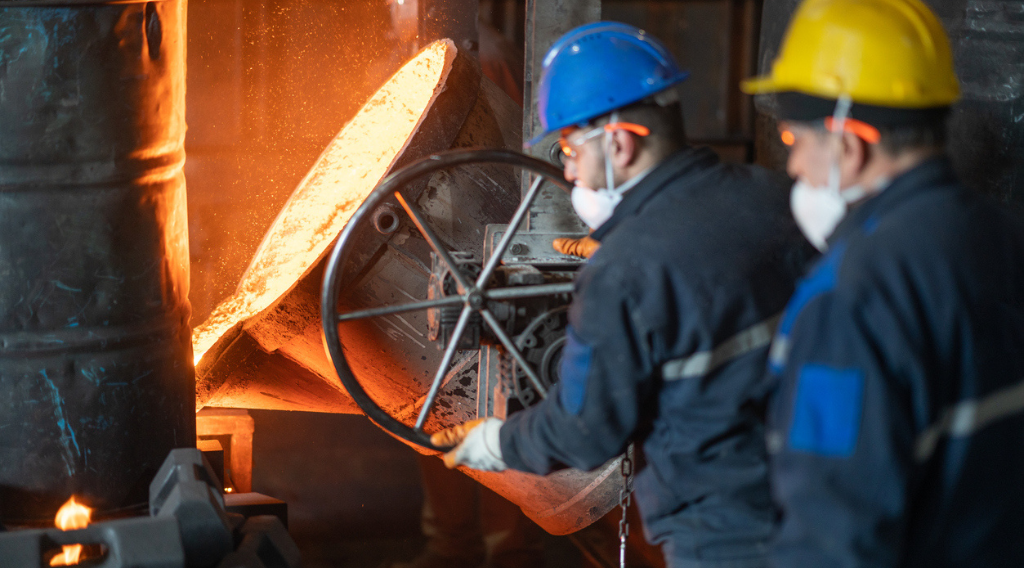
The United States must rapidly decarbonize its industrial and energy production sectors to meet its midcentury climate goals, and carbon management is essential to meeting this objective. Carbon management has an important and complementary role alongside other emissions reduction strategies in decarbonizing sectors across our economy while protecting high-wage jobs. In key industries like steel and cement, where carbon dioxide (CO2) emissions are intrinsic to the industrial process, carbon management is a crucial tool for decarbonization.
As incentives for carbon management deployment have increased, such as the enhanced 45Q tax credit and an influx of dedicated federal funding, so too has interest from policy makers and project developers.
Identifying the opportunities for regional carbon capture, transport, and storage deployment that are most economically, geographically, and environmentally favorable is a critical step in building up the needed infrastructure for economywide decarbonization. A previous study from 2020 conducted by the Great Plains Institute found that a long-term, regional-to-national approach to developing carbon dioxide (CO2) transport infrastructure can help achieve economies of scale, reduce costs and logistical hurdles, and minimize land use in communities.
A recent GPI analysis highlights such opportunities in the Mid-Atlantic region, including Delaware, the District of Columbia, Kentucky, Maryland, New Jersey, Ohio, Pennsylvania, Virginia, and West Virginia. As a significant industrial, manufacturing, and energy generation hub, the Mid-Atlantic region is well-positioned to be a leader in the deployment of carbon management technologies.
Here are three key takeaways from the Mid-Atlantic region analysis:
- The Mid-Atlantic region has significant carbon capture and storage opportunities in both the industrial and power generation sectors.
- The near-term scenario in this analysis captures and stores 220.5 million metric tons of CO2 per year, while a larger system can be developed into the midcentury that captures and stores 304.7 million metric tons of CO2 per year.
- The Mid-Atlantic region also contains abundant onshore and offshore saline geologic storage opportunities.
Near-term carbon capture and storage opportunities in the Mid-Atlantic
The analysis identified 102 industrial and power generation facilities in the region as near-term capture opportunities. These facilities would be connected to 14 onshore and offshore saline geologic storage hubs. The chosen facilities have characteristics that indicate the economics of carbon capture are favorable for investment in the next 15 years:
- Flue gas streams that allow for efficient carbon capture
- Eligibility for the 45Q tax credit (a performance-based tax credit for carbon management)
- The expected longevity of the operations
- The availability of capture technology appropriate to the emissions type

Figure 1. Near-term scenario for carbon capture and storage deployment in the Mid-Atlantic.
While power generation facilities capture the most CO2 in the near-term scenario, there are also significant near-term opportunities in the industrial sector, primarily from cement, steel, and petroleum refineries. All told, the near-term scenario captures a total of 220.5 million metric tons of CO2 per year (MtCO2/yr.).

Figure 2. Capture emissions at industrial facilities in the near-term scenario.

Figure 3. Capture emissions at power generation facilities in near-term scenario
Long-term carbon capture and storage opportunities in the Mid-Atlantic
In the long term, the opportunities for carbon capture and storage deployment in the region are even more robust. In the midcentury scenario, 286 facilities connected to 14 onshore and offshore storage hubs were identified as economically suitable for capture by 2050.

Figure 4. Midcentury scenario for carbon capture and storage deployment in the Mid-Atlantic.
The primary capture opportunities in the midcentury scenario continue to be in power generation, but the portion of captured CO2 from industrial sources increased to 20.3 percent of total captured CO2, up from 12.2 percent in the near-term scenario. In total, the facilities in the long-term scenario capture 304.7 MtCO2/year. This represents a 71.3 percent reduction in total emissions in the region from all sectors analyzed.

Figure 5. captured emissions at industrial facilities in mid-century scenario

Figure 6. captured emissions at power generation facilities in mid-century scenario
Further carbon capture opportunities in the Mid-Atlantic
There are additional opportunities for carbon capture deployment in the Mid-Atlantic beyond those identified in the near-term and midcentury scenarios in this analysis. Overall, 789 facilities within the Mid-Atlantic region are eligible for the 45Q tax credit based on the thresholds set forth in the Inflation Reduction Act of 2022. While not identified as a significant opportunity for this study, developing a regional transport and storage infrastructure could aid these facilities in lowering their CO2 emissions through carbon capture.

Figure 7. Mid-Atlantic facilities eligible for the 45Q tax credit.
Summary
The Great Plains Institute’s Carbon Capture and Storage Opportunities in the Mid-Atlantic analysis shows that, given its economic and geographical characteristics, the region could play an essential role in carbon management deployment and industrial decarbonization efforts in the US. There are economically viable deployment scenarios in both the near and long term and ample opportunities beyond those scenarios, given the concentration of 45Q-eligible facilities and abundant geologic storage in the region. The opportunities presented in this analysis highlight just one of the many solutions needed to reduce the impacts of climate change, and that ought to be considered alongside other important tools for economywide decarbonization.
To see more information about the opportunities for carbon capture and storage in the Mid-Atlantic region and across the US, please visit carboncaptureready.org.


